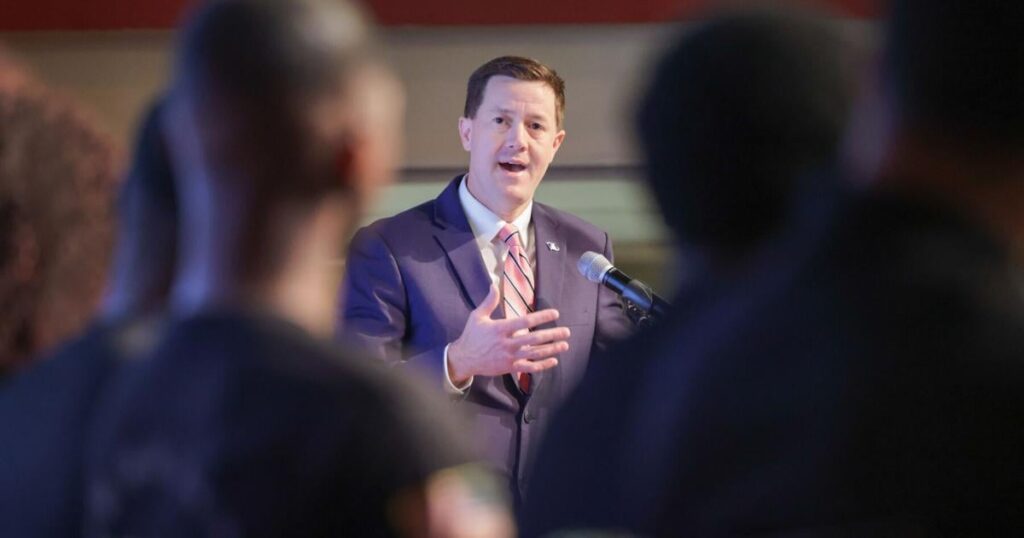Louisiana’s top education officials laid out ambitious goals for improving the state’s schools Monday, including raising test scores and reducing absenteeism, and announced a statewide tour to promote career education in high schools.
State Superintendent of Education Cade Brumley said the goals would help the state prioritize where to funnel its resources.
This is “where we’re investing our time, our energy, our conversations, our budget and the organization of our staff because we believe these are the most important areas for us to focus on,” he said during a meeting of the Board of Elementary and Secondary Education.
While Louisiana has made strides in recovering from pandemic learning loss and improving its national education rankings, it still has a way to go after students saw their progress stall on this year’s state tests. The state’s absenteeism rate also remains higher than before the pandemic, according to the most recent publicly available data.
To remedy the issues, the state outlined several focus areas:
- Early childhood education
- Research-based reading instruction
- Math lessons based on foundational skills
- Effective teachers
- School options for families
- Career opportunities for high schoolers
- Student attendance.
In each area, officials presented several goals. For example, the aim is to increase the share of students meeting expectations on state reading tests by 5 percentage points and math tests by 10 percentage points.
Louisiana is one of just three states where reading scores have rebounded to pre-pandemic levels, according to a national analysis of test scores from 2019 to 2022. But on this year’s state LEAP tests, student progress stalled in math and science and improved only slightly in English.
To bring reading scores up, the state will make sure grade K-3 teachers complete a training in the so-called “science of reading” that is required by state law, said Jenna Chiasson, the Louisiana Department of Education’s deputy superintendent of teaching and learning. As of May, up to 30% of teachers still had not completed the mandatory training, according to state data.
The department will also support districts as they use a literacy screener, which measures students’ reading progress, Chiasson said. The data collected through the screener helped her team pinpoint which schools may need more guidance and which ones the state can learn from.
“We’ve already identified school systems who did amazing things throughout the year,” she said. “What are we seeing in those classrooms? What programs are they using?”
To improve math scores, Chiasson said districts should make sure grade 4-8 math teachers complete a training on foundational math skills. Under state law, educators must complete the roughly 50-hour course by August 2025.
Chiasson said the state is developing a screener to track elementary students’ math progress.
The state Legislature also provided $30 million to expand student tutoring during school and $5 million for after-school tutoring. An after-school program that struggled to enroll students last year saw an “explosion” of interest this fall, officials said, and more than 1,000 students are now on the program’s waitlist.
Other goals include reducing the share of students who are chronically absent by 5 percentage points, increasing the number of students taught by “high-quality” educators and lowering the percentage of students in “failing” schools by 5 points.
Another objective is to increase the share of high school graduates who are “college, career or service ready.” To that end, state board of education members will visit school systems across the state to meet with education and business leaders to discuss local work-based learning opportunities.
Under a new school-accountability system that goes into effect during the 2025-26 year, schools will receive points based on the percentage of work-based learning students who complete an internship or similar learning experience.
The board plans to conduct its first two district visits in November.
“We are doing our best to cultivate a number of different relationships around the state,” Brumley said, including between school and industry leaders.

